Systems, Modulation and Noise
Modulation of WSS process
Balu Santhanam, Probability Theory & Stochastic Process 2020: Modulation of Random Processes
modulated with a random cosine
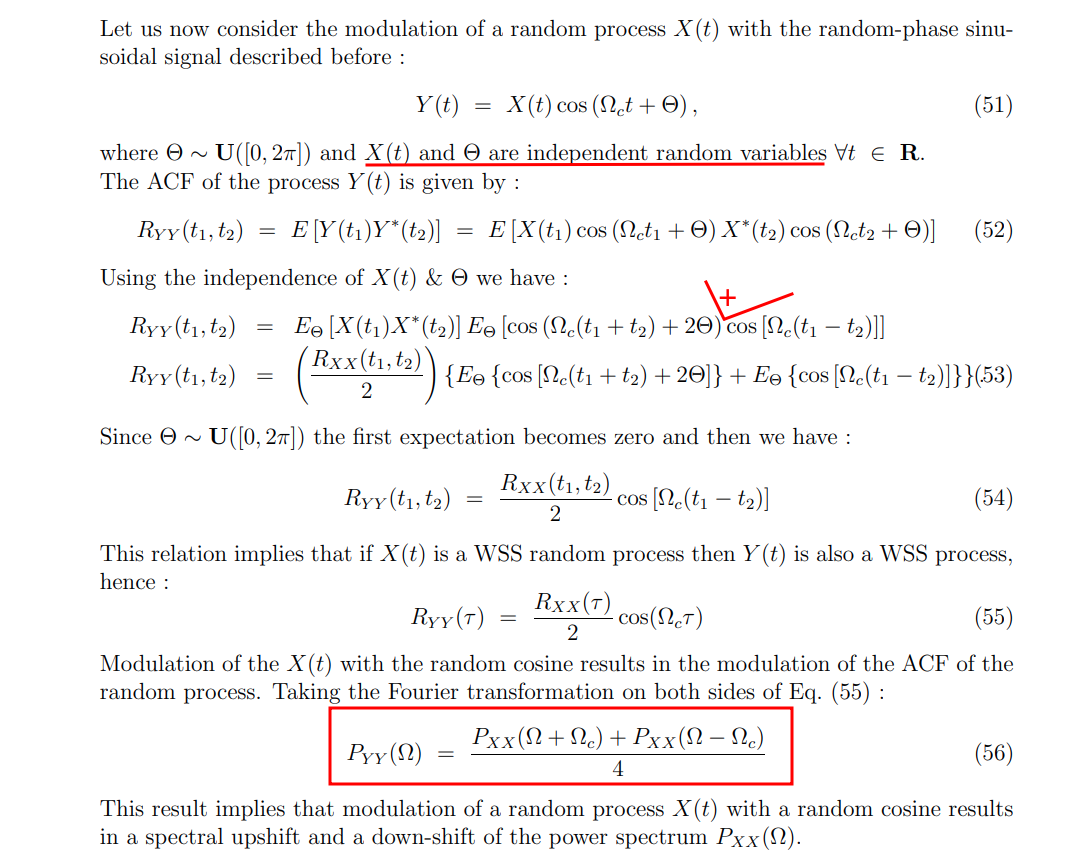
Haykin, Simon S., and Michael Moher. Communication Systems. 5th ed. John Wiley & Sons, 2009. - Mixing of a Random Process with a Sinusoidal Process
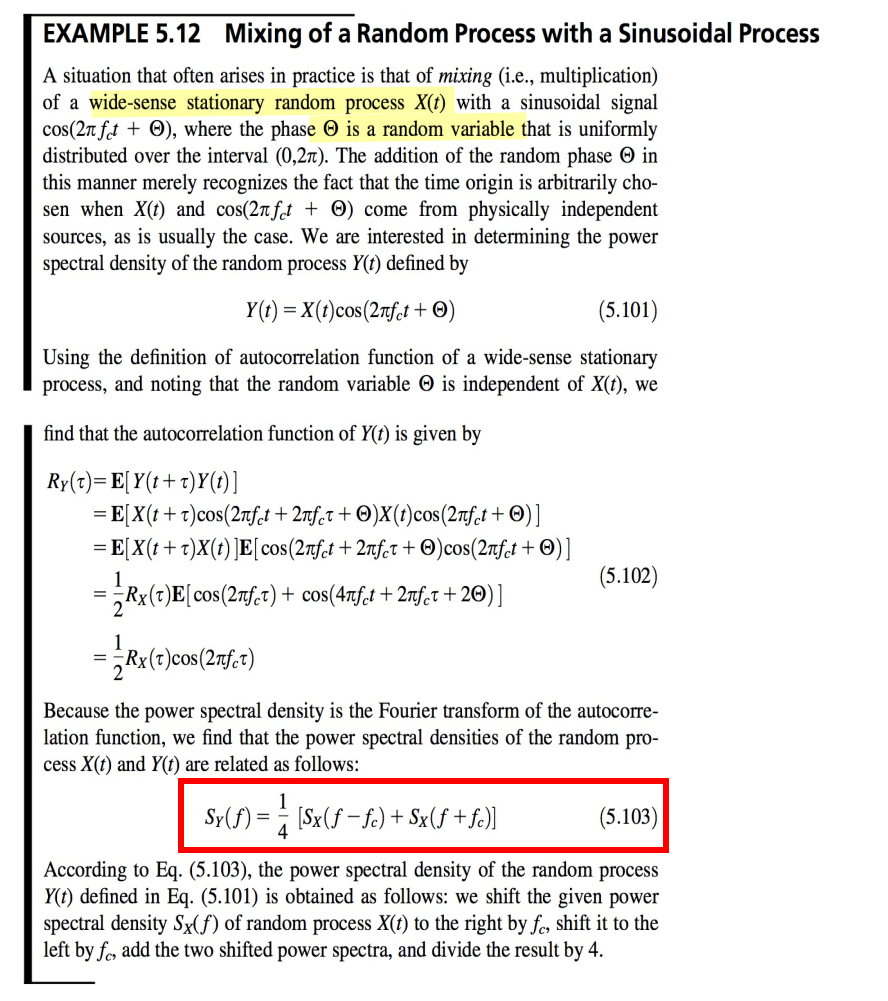
modulated with a deterministic cosine
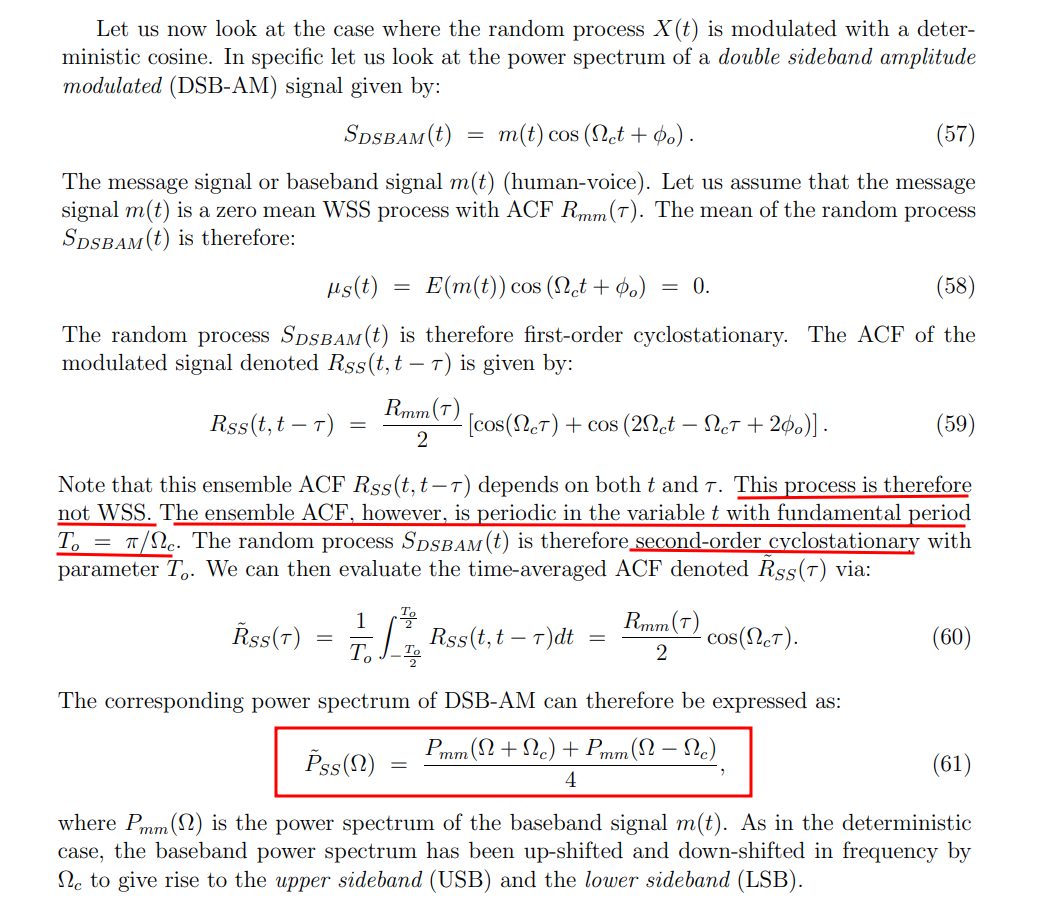

Hayder Radha, ECE 458 Communications Systems Laboratory Spring 2008: Lecture 7 - EE 179: Introduction to Communications - Winter 2006–2007 Energy and Power Spectral Density and Autocorrelation

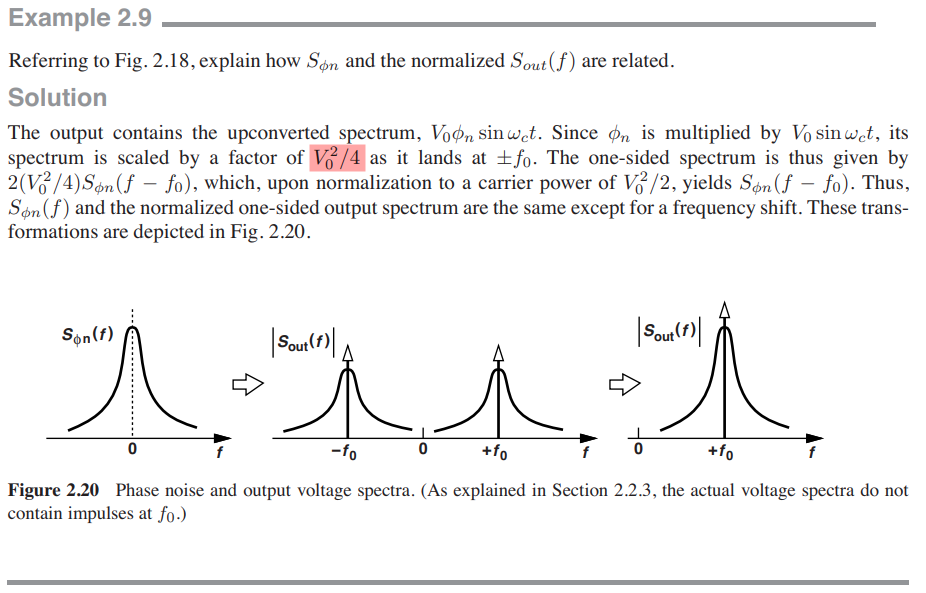
Quadrature-Modulated Processes
Haykin, Simon S., and Michael Moher. Communication Systems. 5th ed. John Wiley & Sons, 2009.
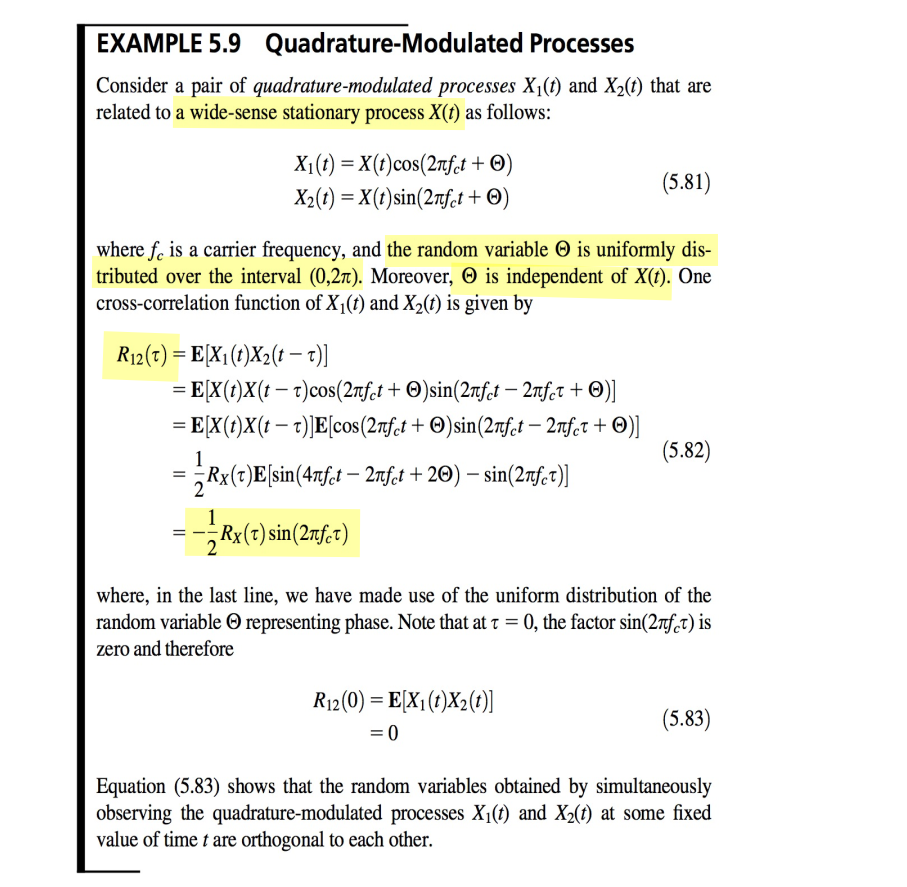
Sampling of WSS process
Balu Santhanam, Probability Theory & Stochastic Process 2020: Impulse sampling of Random Processes
DT sequence \(x[n]\)
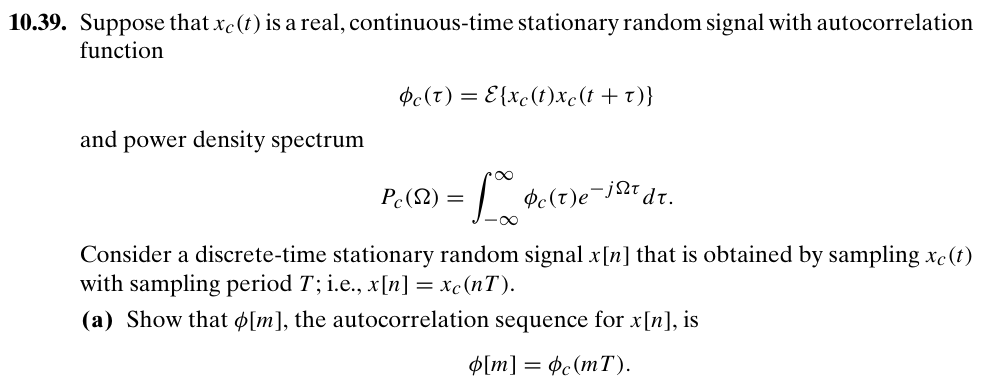

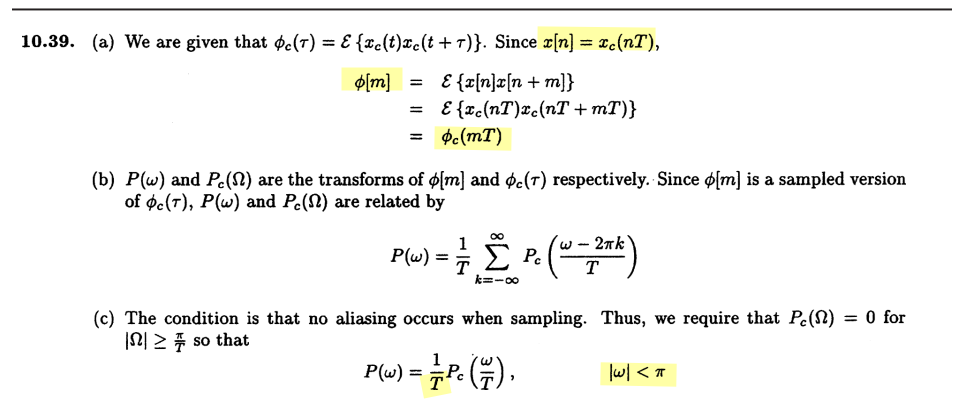
Owing to \(\phi[0] = \phi_c(0)\), the average power of the sampled version \(x[n]\) is the same as its input \(x_c(t)\)
impulse train \(x_s(t)\)
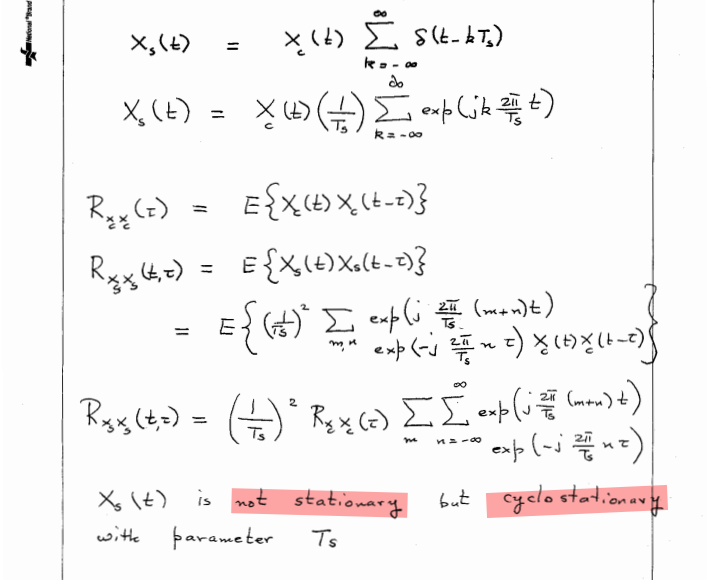
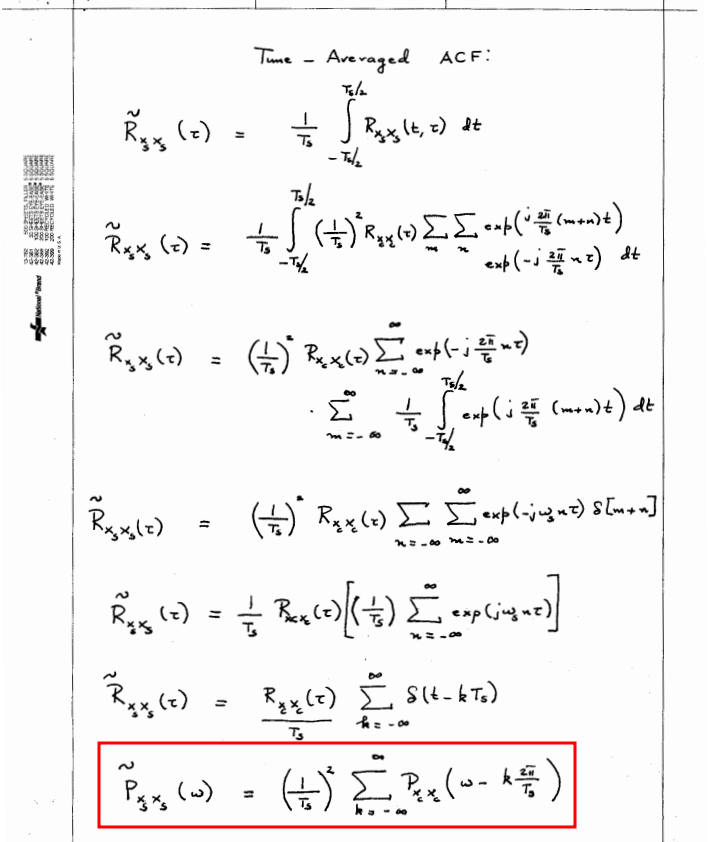
That is \[ P_{x_s x_s} (f)= \frac{1}{T_s^2}P_{xx}(f) \] where \(x[n]\) is sampled discrete-time sequence, \(x_s(t)\) is sampled impulse train
Noise Aliasing
apply foregoing observation
Rectangular Pulse Sampling
Balu Santhanam. ece439 Introduction to Digital Signal Processing. Example: Rectangular Pulse Sampling [http://ece-research.unm.edu/bsanthan/ece439/recsamp.pdf]
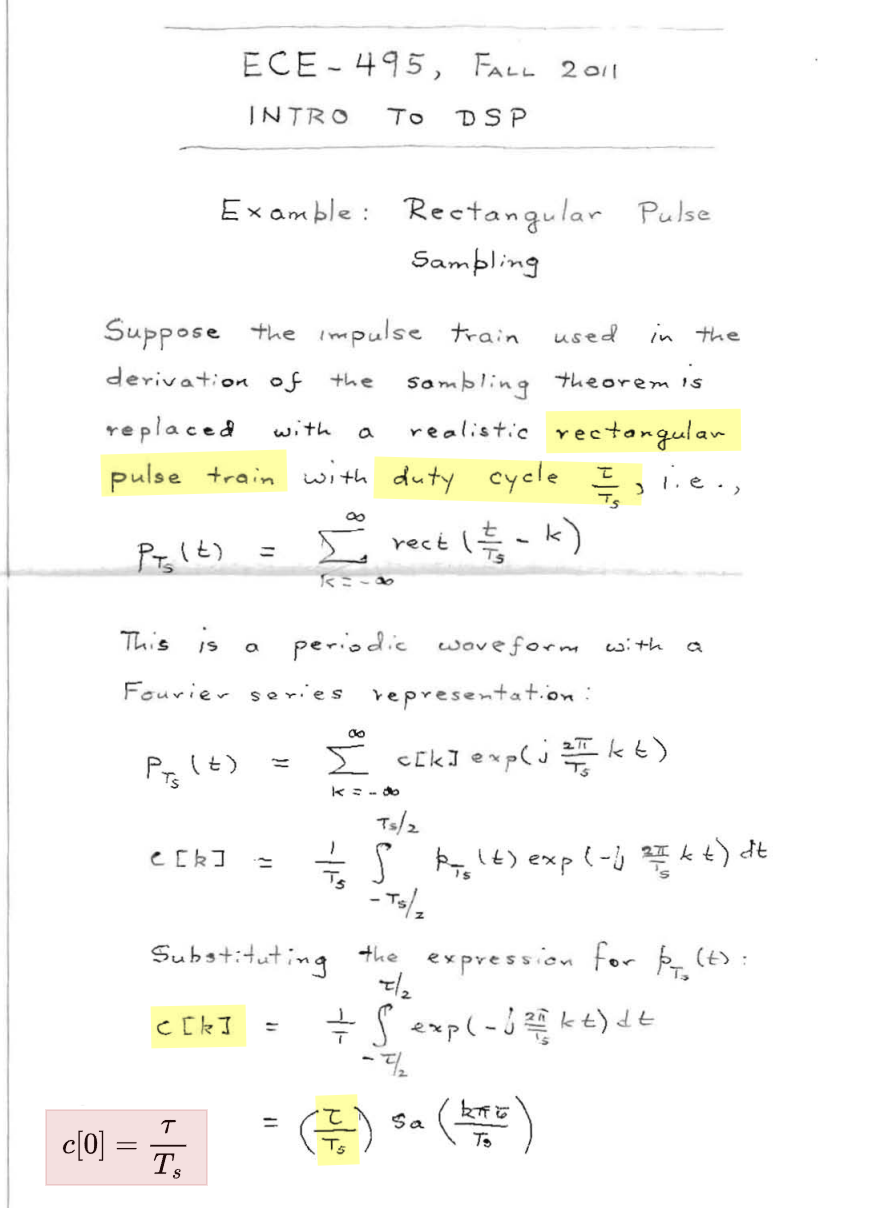

reference
Alan V Oppenheim, Ronald W. Schafer. Discrete-Time Signal Processing, 3rd edition [pdf]
R. E. Ziemer and W. H. Tranter, Principles of Communications, 7th ed., Wiley, 2013 [pdf]
John G. Proakis and Masoud Salehi, Fundamentals of communication systems 2nd ed [pdf]
Rhee, W. and Yu, Z., 2024. Phase-Locked Loops: System Perspectives and Circuit Design Aspects. John Wiley & Sons
Lacaita, Andrea Leonardo, Salvatore Levantino, and Carlo Samori. Integrated frequency synthesizers for wireless systems. Cambridge University Press, 2007
Phillips, Joel R. and Kenneth S. Kundert. "Noise in mixers, oscillators, samplers, and logic: an introduction to cyclostationary noise." Proceedings of the IEEE 2000 Custom Integrated Circuits Conference. [pdf, slides]
Antoni, J., "Cyclostationarity by examples", Mechanical Systems and Signal Processing, vol. 23, no. 4, pp. 987–1036, 2009 [https://docente.unife.it/docenti/dleglc/a-a-2010-2011-dmsm/ciclostazionarieta.pdf]
Kundert, Ken. (2006). Simulating Switched-Capacitor Filters with SpectreRF. URL:https://designers-guide.org/analysis/sc-filters.pdf
STEADY-STATE AND CYCLO-STATIONARY RTS NOISE IN MOSFETS [https://ris.utwente.nl/ws/portalfiles/portal/6038220/thesis-Kolhatkar.pdf]
Christian-Charles Enz. "High precision CMOS micropower amplifiers" [pdf]
L.W. Couch, Digital and Analog Communication Systems, 8th Edition, Pearson, 2013.